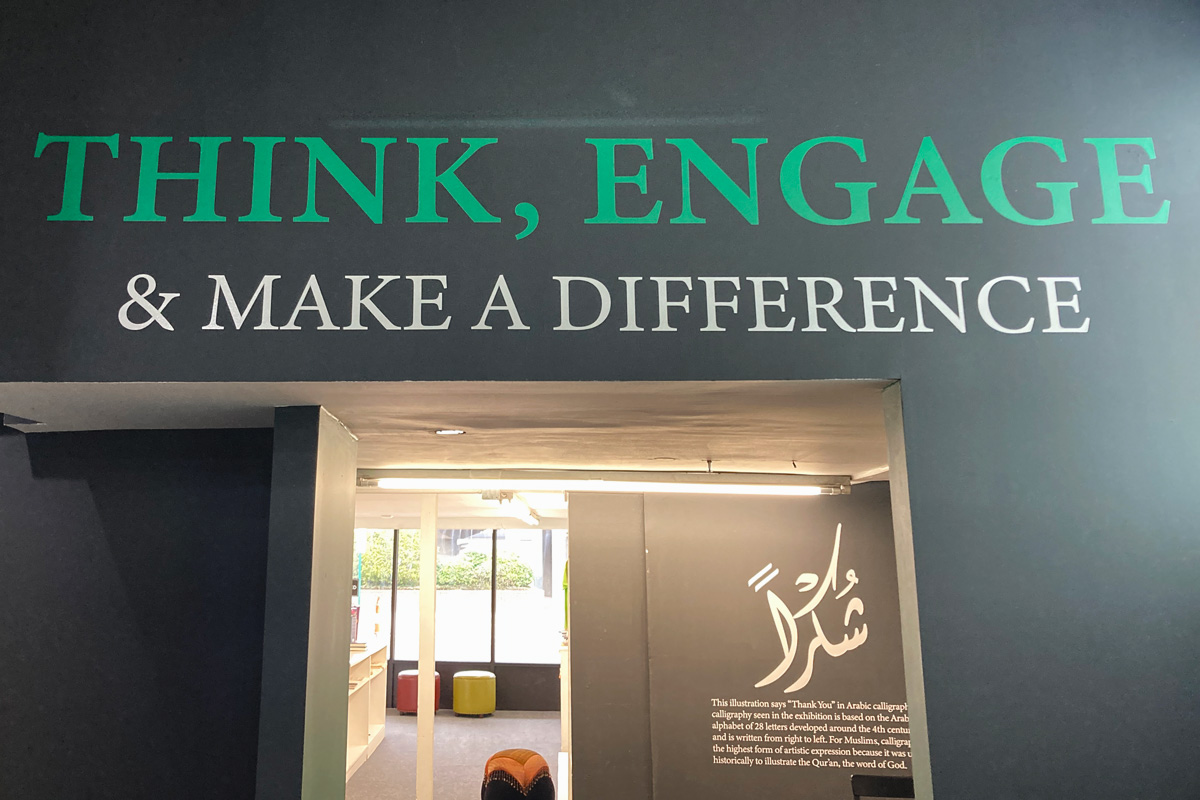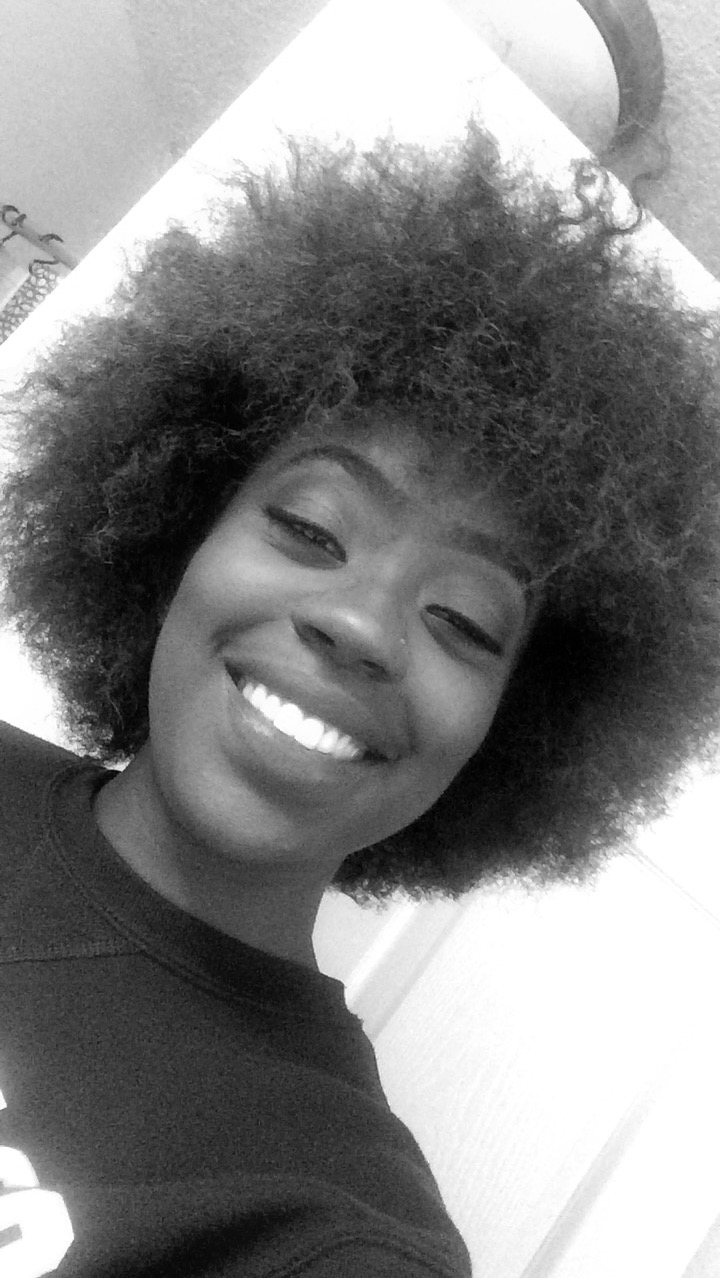Nestled on the corner of Capitol Street and Farish Street is the International Museum of Muslim Culture’s “Muslims with Christians and Jews: An Exhibition of Covenants and Coexistence.” The goal is to showcase the commonalities between Islam, Christianity and Judaism and build bridges of understanding.
The exhibit is housed at the museum’s satellite location, a few blocks from the main museum in the Mississippi Arts Center on Pascagoula Street. There isn’t a sign, so if you blink, you might miss the exhibition, especially with the allure of American Deli two doors down.
The inside is bursting with greens, golds and browns. When you walk in, the first thing you see is the emerald green wall with the exhibition’s title in large yellow and white letters.
“We start off with the greetings of peace: ‘As-Salaamu Alaikum.’ I want to wish peace on you. I want to greet you, welcome you and show you that I mean you no harm. Most cultures have some tradition of this,” tour guide Savannah Willis told the Mississippi Free Press on Dec. 23.
After a brief introductory video of the museum, Willis takes me to the “Greetings of Peace” placard. She said most people do not know that Islam, Judaism and Christianity are based on the same fundamental values.
Three different scriptures pulled from the Quran, Hebrew Bible and New Testament underscore her point—they are worded differently, but preach the same message: peace.
“You will not enter Paradise until you believe, and you will not believe until you love one another. Shall I tell you about something which, if you do it, will make you love one another? Spread peace (salaam) amongst yourselves,” Willis reads from the Prophet Muhammad.
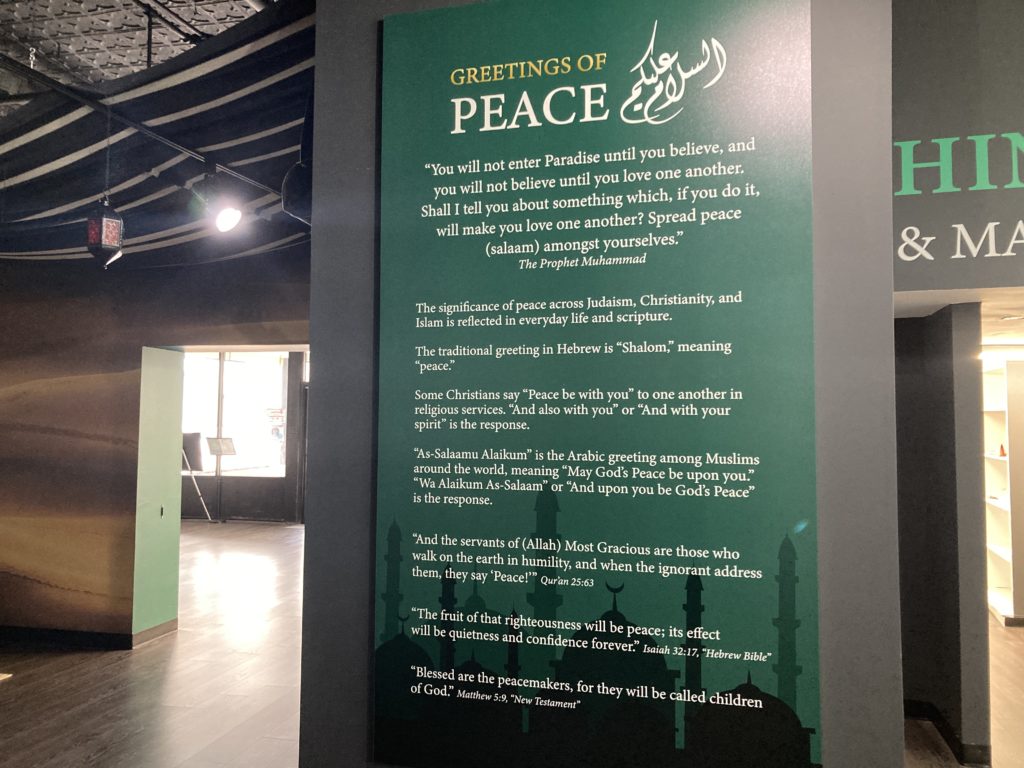
“Amongst yourselves” can be where you stay or your community, she said, and is a call to not only help those you are familiar with, but humanity as a whole.
“We believe, in Islam, that there is no hierarchy in the sense of someone is closer to God than someone else. All men, all women have equal access to God. We believe that if you really embrace that concept, it’s easier to see that you are no better than anyone or no one is no better than you. It makes it easier to deal with people justly and fairly,” the tour guide said.
For two hours, Willis and I make our way around the museum from one portion to the next.
One goal of the museum is to challenge assumptions and teach a history that many Americans do not know.
Twenty Years and Counting
International Museum of Muslim Cultures co-founder and activist Okolo Rashid said the inspiration behind the “Muslim with Christians and Jews” exhibit comes from John Morrow’s book, “The Covenants of the Prophet Muhammad with the Christians of the World.”
She said the number-one resource for Muslims is the Quran and the most sacred thing for Muslims is the hadef—the sayings and doings of the Prophet Muhammad—which have been used to promote and share Islam. Dr. Morrow went to the Middle East, Christian monasteries and Islamic places for copies of these hidden covenants, treaties and letters, she said.
“This scholar was able to go back and restore the memory of Muslims. The first constitution in history was established by Prophet Muhammad when he established the first Islamic state. So Prophet Muhammad is more than just a prophet of God; he was also a respected head of state that people knew during a particular period of history,” Rashid told the Mississippi Free Press on Dec. 24.
Rashid said a big part of the museum’s work is the use of its platform to challenge false narratives about Islam and Islam’s contributions to history.
“It’s more of a revival and restoration. It’s a reminder to the interfaith community that there was a period where interfaith communities lived in peace,” she said. “They advanced scholarships. They advanced science. Most people don’t know that it was Islam that sparked the renaissance in Europe. They don’t teach (history) in that way.”
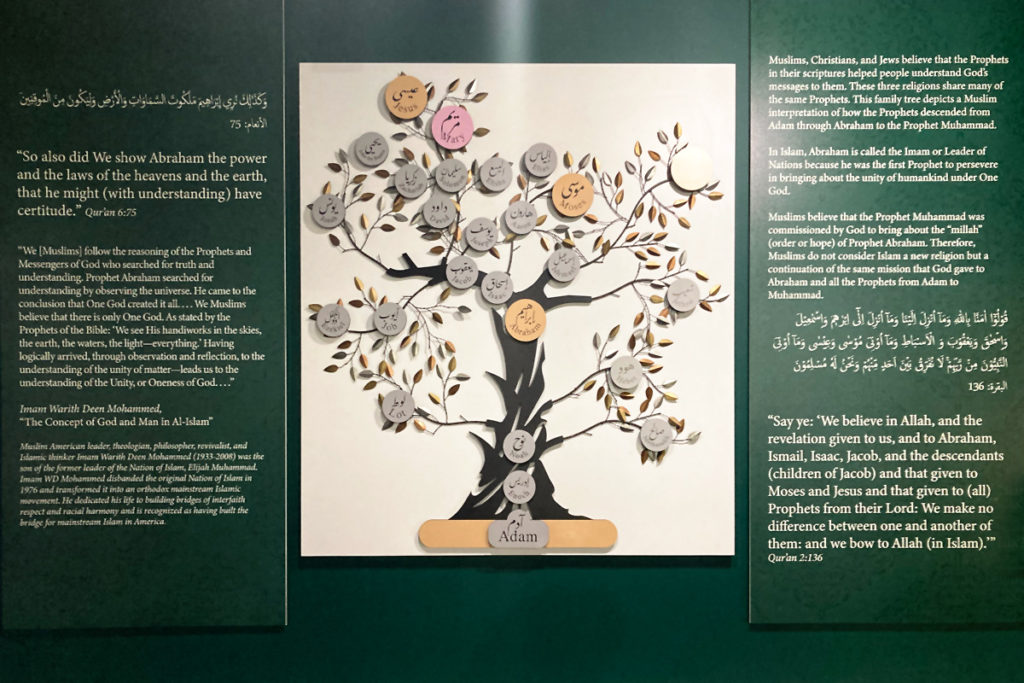
Between the 5th and 6th centuries, the Roman Empire’s persecution of Christians and Jews caused them to escape to the Arabian Peninsula. There an exchange of knowledge began, Willis said during the tour.
“The resources have been lost and people have forgotten. … We have this Western dominance, and a big part of it is to keep division,” Rashid said.
The main IMMC museum has been open since 2000, celebrating its 20th anniversary on Dec. 30, 2020. To mark the date, the museum planned a virtual gala that day at 6 pm. Curated and hosted by Deputy Executive Director Lina Ali, artists such as Ronnie Malley, oud player and ensemblist, and harpist Destiny Muhummad plan to perform with Savannah Willis reciting poetry. The museum will also give awards to honor and highlight Muslim organizations, Willis said.
“I think a lot of people don’t understand that this museum isn’t an attempt to convert people. It’s just a way for us to start a dialogue and create a place for safe conversation in exchange for ideas and an incubator for us to hatch a new way forward. This gala is a fundraising opportunity, but first and foremost, we want to … let people know we’re here,” Willis said.
The virtual gala is open to everyone, and registration for the event can be found here.
Rashid said it has been unreal, yet surreal to be in operation so long, especially since they do not have the resources that many of the larger museums have.
“We had to fight every step of the way, guard our resources and garner support. We feel very excited, fulfilled, having been able to make this major milestone,” she said.
Fortunately, help has come in the form of a $475,000 W.K. Kellogg Foundation grant from Dec. 1, 2020, until November 30, 2023. Rashid said the museum has been partners with Kellogg since 2012 and have received grants from the foundation in the past.
The foundation underwrote an educational curriculum that was piloted in the Jackson Public School District along with the Holmes County School District. Now, the W.K. Kellogg Foundation is launching another major project called Racial Equity 2030, where they will give away $90 million to 10 organizations nationwide in 10 years, Rashid said.
“They’re serious, caring partners, so to be associated with Kellogg and to be an organization that they have found that we can be trusted to invest in, that’s pretty amazing. It’s sobering as well. You put the time in, and you just keep on working, and eventually people realize your commitment,” the co-founder said.
‘A Messenger and Prophet’
On display in the Capitol Street exhibit is a Prophet wall—a family tree of prophets that starts with Adam and branches off into individuals like Mary, Abraham, Hagar and Ishmael. Just like Christianity and Judaism, Islam believes in the same prophets and God, Willis said, adding that one of Islam’s most influential prophets was the Prophet Muhammad.
“You either had religious leaders or heads of states. It was rare that you had people that could combine the two in a peaceful way, which a lot of scholars will point out. He was the only successful application of the two marrying one,” Willis said.
Prophet Muhammad was born in 570 in Mecca—a barren, open desert that was tribalistic, racist and practiced slavery. He lived a very hard life with multiple deaths in his family. His mother died when he was 6, his father died before he was born, and his grandfather, in whose care Muhammad was left, died two years after his mother, Willis said. Abu Talib, his uncle, took over raising him.
“The uncle was a tradesman, and he had a caravan, so the Prophet Muhammad would travel with him and work with him. He actually got an understanding of oppression, persecution and injustice at a very young age from his own life,” Willis said.
He had the reputation of being trustworthy, righteous and politically savvy with the mindset of wanting what’s best for everyone. At 40, he started to receive prophecy. He would go into a cave for weeks without food and water, and one day he came back and claimed to see an angel named Gabriel, Willis explained.
“The first prophecy was the first command he was given: read,” she said. “He said he couldn’t (read), and the angel Gabriel would recite to him in a very poetic manner. If you hear the Quran, a call to prayer, it’s a very melodic sound. It’s an amazing rhyme structure that also has a message,” she said.
Prophet Muhammad’s messages—that there is only one God, that no man should be enslaved to another man, and that women have more value and should be honored—were not well received.
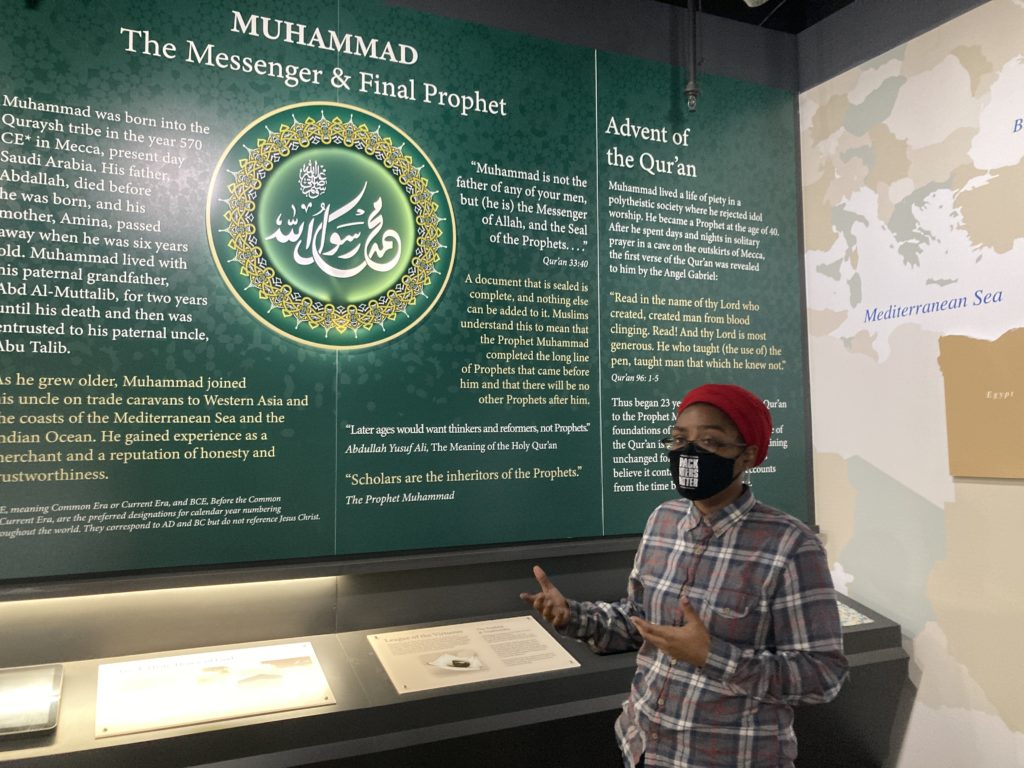
“When he started to receive revelation, and his revelation was the same as all of the prophets that came before him, which is God is one, he started messing with their money the same way Jesus did,” the tour guide said.
The Ka’bah is the house of God, which Muslims revere as the first house of worship. The site housed around 360 idols, such as totems and non-human entities such as plants and animals, and brought in worshippers from around the world. The Quraysh, a Meccan tribe of elite families, made a lot of money from the Ka’bah, Willis said, and Prophet Muhammad was disrupting their income.
“They were persecuting him, and the only protection he had was his uncle because he was a very revered man in society. A lot of people started to follow him, and a lot of them were the enslaved people,” she said.
Sumayyah bint Khabbat, one of the first followers and the first martyr of Islam, was tortured and died because of her allegiance, causing Prophet Muhammad’s other followers to flee to Absentia, now modern-day Ethiopia.
The Prophet Muhammad stayed in Mecca, but when his uncle died, he no longer had protection, and the sons of the elite families began to make plots on his life. They hatched a plan where everyone would participate in the murder, so no one person would shoulder the blame, she said.
“After the attempt on his life, they had a plan to have someone else in his bed,and he fled in the middle of the night. He went to Medina and sent for his followers to be sent to Medina. He had been invited to Medina because it is a pluralistic (diverse) society. It was inhabited by Jewish residents, as well as a few Pagan and Christian residents,” she said.
The residents, aware of his reputation, elected Muhammad as the ruler of their community, and he enacted the Constitution of Medina. The Constitution’s influence runs deep, as England’s Magna Carta and the U.S. Constitution were modeled after it, she said.
“The Constitution of Medina gave everybody the right to practice their religion as they saw fit. The only thing that was slightly different from our concept of religious freedom is that the only people who were allowed to prophesy, go out and preach, were Muslims,” Willis said.
“When crimes were committed, you were held to the statue of our religion. It’s like God’s law, which rules everyone, but the laws of the land were left to the elders.”
‘The In Between’
Negative stigmas and stereotypes exist about the Islamic faith: All women are oppressed and aren’t allowed to be human; Muslims are terrorists who hate Christians, Jews and Americans; Prophet Muhammad is a monster. The museum is busting all of these myths, Willis said.
“People get to meet and see us and ask questions. They see that we are just like them and don’t fit these stereotypes. We present facts and evidence that can’t really be disputed because there is proof,” she said.
“I think places like the museum are the key because it takes the conversation out of the church, synagogue and masjid, and brings it into a safe, intellectual and scholarly environment where the intention isn’t to proselytize and convert. The intention is to educate and relate.”
Savannah said she converted from Christianity to Islam in 2013 and hasn’t looked back since. Learning about her faith makes her want to know more about Christianity, and she wants to reach out to the Jewish community and bond with them. She believes if she had this information while she was still in school, she might not have converted to Islam because the wealth of knowledge would have already been there.
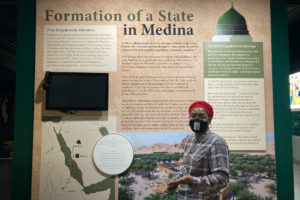
“I don’t think we’re teaching our students to be critical thinkers because we’re selecting what we want them to have and think about, and that’s not how you move a society forward, Willis said.
Visit the “Muslims with Christians and Jews: An Exhibition of Covenants and Coexistence,” at 101 E. Capitol St. in downtown Jackson. To learn more about the International Museum of Muslim Cultures, visit its main facility on the second floor of the Mississippi Arts Center at 201 E Pascagoula St. To attend the museum’s virtual gala, you can register here.

